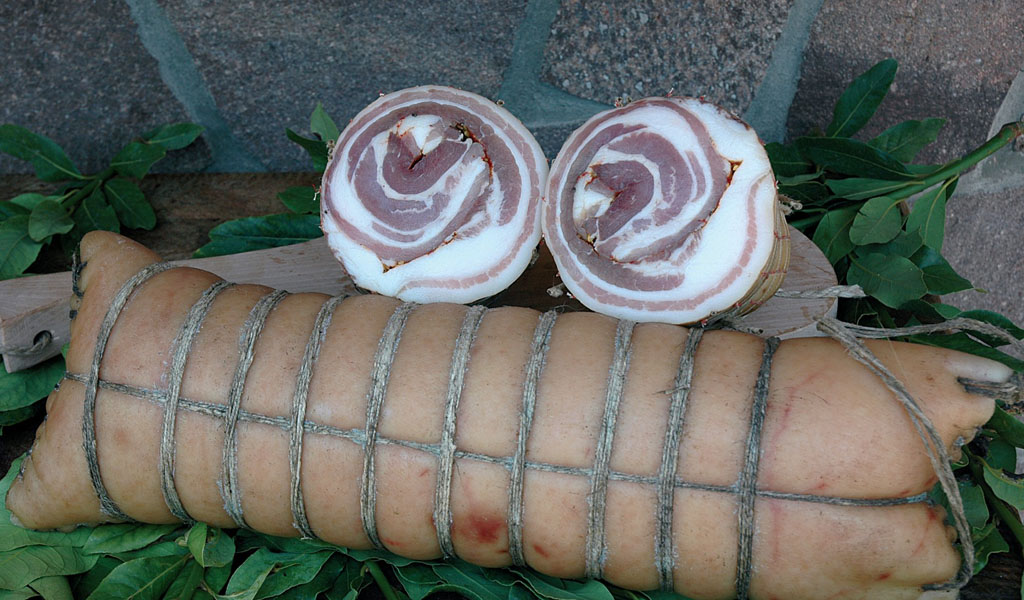Prodotti tradizionali
pancetta arrotolata

In tutta la regione Campania, soprattutto nelle aree interne, è diffusa la produzione della pancetta. L'abitudine di consumare tale salume risulta essere antichissima, risalendo, infatti all'epoca romana, poiché in epoca imperiale i legionari ricevevano ogni tre giorni una razione di pancetta o lardo. Durante l'impero dei Longobardi, sappiamo che i manovali, all'inizio del lavoro stagionale, ricevevano una dose di pancetta a testa di circa cinque chili. Fino alla metà del'900, la pancetta, insieme ad altri grassi come lardo e strutto, è stata considerata una delle principali risorse energetiche per l'uomo, poiché questo salume, che si ricava dalla zona addominale del maiale, lavorato nelle diverse tipologie e forme, si presenta con strati alternati di parti grasse e magre, più o meno sottili. La pancetta arrotolata, a causa del suo stesso modo di preparazione porta la parte grassa all'esterno e la parte magra all'interno in modo che il sapore rimanga morbido e ben equilibrato.
In Campania and especially in the internal areas the production of bacon (pancetta) is very common. The custom of eating this meat is very ancient, and it goes back to the roman ea since at that time the legionaries received a three day ration of bacon or lard. During the empire of the Longobards, we know that manual laborers, at the beginning of the seasonal jobs, received a dose of bacon each of about 5 kg. Until the middle of the ‘900, bacon, with other fats like lard, was considered one of the main energy resources for men, since this meat, that is derived from the abdominal area of the pig, and worked in various ways and shapes, presented an alternation of leaner layers to fatter layers, more or less thin. Pancetta arrotolata, for the way it's produced, has the fat part on the exterior and the lean part on the inside allowing the taste to remain soft and balanced.